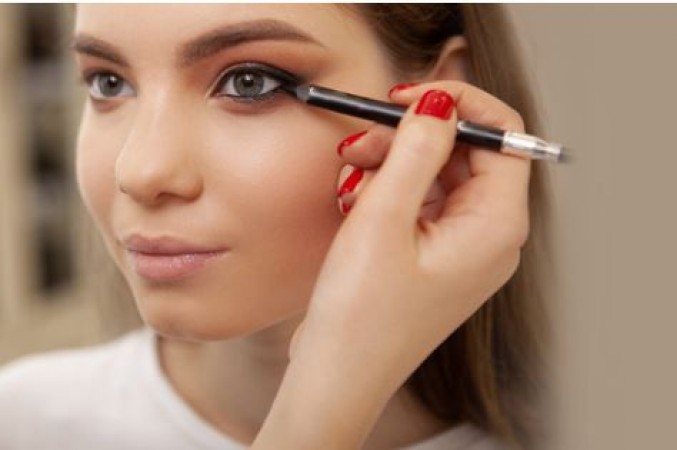
Kajal, also known as kohl or surma, has been a traditional cosmetic used for centuries to enhance the eyes' beauty. It holds cultural significance in many regions, often symbolizing beauty, protection against the evil eye, or as a remedy for various eye ailments. However, while kajal can accentuate the eyes' allure, improper removal can lead to a host of eye-related issues. In this article, we delve into the importance of removing kajal properly and provide comprehensive tips to ensure the safe removal of kajal without compromising eye health.
Why Removing Kajal Properly Matters
Preventing Eye Irritation
The eyes are highly sensitive organs, and any foreign substance, if not removed properly, can cause irritation and discomfort. Kajal, when left on the eyes for an extended period or removed incorrectly, can lead to irritation, redness, and itching. This occurs when kajal particles come into contact with the delicate tissues of the eyes, triggering an inflammatory response. Moreover, rubbing or tugging at the eyes during removal can exacerbate the irritation, leading to further discomfort and potential damage.
Avoiding Eye Infections
Beyond mere irritation, improper removal of kajal can pave the way for more severe complications such as eye infections. The residue left behind by kajal around the eyes creates a conducive environment for bacterial growth. Bacteria thrive in warm, moist environments, and the area around the eyes, coupled with remnants of kajal, provides an ideal breeding ground. As a result, individuals may be at an increased risk of developing eye infections such as conjunctivitis (commonly known as pink eye), which can spread rapidly and cause significant discomfort and inconvenience.
Tips for Safe Kajal Removal
Use a Gentle Cleanser
When it comes to removing kajal, using the right products is crucial. Opt for a gentle eye makeup remover or micellar water specifically formulated for sensitive eyes. These products are designed to effectively dissolve makeup without harsh chemicals that can irritate the eyes. Look for hypoallergenic and ophthalmologist-tested options to minimize the risk of adverse reactions.
Be Gentle
The skin around the eyes is exceptionally delicate and prone to damage. Therefore, it's essential to handle it with care, especially during makeup removal. Avoid harsh rubbing or pulling motions, as these can stretch the skin and contribute to premature aging. Instead, use gentle, upward strokes when wiping away kajal to minimize friction and reduce the risk of irritation.
Start from the Outer Corner
A strategic approach to kajal removal can make all the difference in achieving a clean, flawless finish. Begin by focusing on the outer corner of the eye and gradually work your way towards the inner corner. This technique prevents smudging and ensures thorough cleaning without spreading kajal residue across the eye area. Additionally, starting from the outer corner allows for better control and precision during the removal process.
Use Warm Water
After using a makeup remover, rinse your eyes with lukewarm water to wash away any remaining kajal particles. Lukewarm water helps to gently flush out debris and soothe the eyes, providing relief from any lingering discomfort. Avoid using hot water, as it can strip the skin of its natural oils and exacerbate dryness. Once rinsed, pat your skin dry with a soft towel, avoiding rubbing motions that can irritate the delicate eye area.
Double-Cleansing
For those with sensitive skin or heavy makeup residue, double-cleansing can be an effective technique to ensure thorough removal. After using a makeup remover, follow up with a gentle facial cleanser to eliminate any lingering traces of kajal. Double-cleansing not only removes makeup residue but also helps to cleanse the skin of impurities, leaving it fresh and rejuvenated.
Avoid Sharing Makeup
Sharing is caring, but when it comes to makeup, it's best to err on the side of caution. Sharing eye makeup, including kajal pencils or sticks, can introduce harmful bacteria into the product and increase the risk of contamination. Additionally, sharing makeup brushes or applicators can transfer bacteria from one person to another, further heightening the risk of eye infections. To protect your eye health, always use your own makeup products and avoid borrowing or lending items to others.
Check for Allergic Reactions
While kajal is generally safe for most individuals, some may experience allergic reactions to certain ingredients. If you notice any redness, swelling, or itching after using a new kajal product or remover, discontinue use immediately. These symptoms may indicate an allergic reaction, and continued use could exacerbate the condition. Consult with a dermatologist or ophthalmologist for personalized advice and alternative product recommendations.
Replace Old Products
Expired or contaminated kajal products can pose significant risks to eye health. Over time, makeup products can degrade, allowing bacteria to proliferate and potentially cause infections. Check the expiration dates on your kajal products regularly and discard any items that have expired. Additionally, if you notice changes in the texture, color, or smell of your kajal, it's best to replace it as soon as possible to avoid adverse reactions. Properly removing kajal from your eyes is essential for maintaining good eye health and preventing a myriad of issues, ranging from irritation to infections. By following the tips outlined in this article, you can safely enjoy the beauty of kajal without compromising the well-being of your eyes. Remember to use gentle products, handle the delicate eye area with care, and prioritize hygiene to keep your eyes looking and feeling their best.
Renault-Nissan will bring 6 new cars in the Indian market, 2 electric models will also be included
The first Made in India Hyundai EV will be launched, will get a range of 400-500 km
These cars will be launched in the Indian market, top models of Mahindra-Tata included